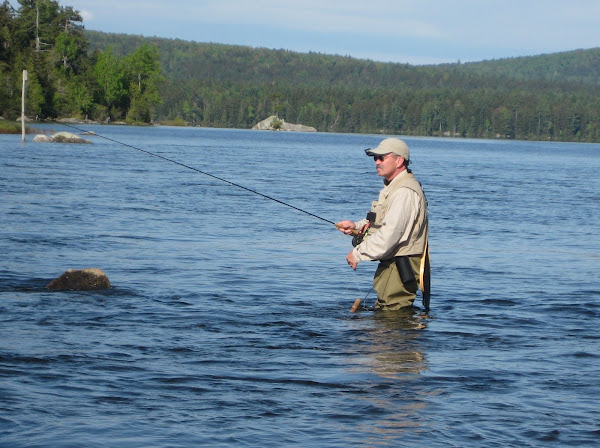
I've been watching the fly fishing pressure in the northwestern part of the state of Maine increase over the last 10 years. By pressure, I mean simply more fishermen and women (I will use the term "fishermen"). The reason appears to be the unbridled spread of information about where to catch significant numbers of wild trout and salmon.
This unprecedented abundance of information is coming from a variety of sources, including news outlets, electronic networking and bloggers, among others.
The biggest culprit collectively is the Internet. Never in my wildest imagination did I dream that hundreds -- maybe thousands -- of fly fishermen could gain access to the precise GPS coordinates of some of my favorite fishing spots just by clicking a mouse.
I've fly fished for a long time. I grew into this activity learning that one never told the truth about anything to do with catching a fish, especially if you were the only person to have witnessed it. The cardinal rule, however, was that you never told a stranger about your favorite fishing spot. You only told people you trusted, which included your mother and maybe your favorite aunt. Okay, maybe your best friend as well, but only if you'd known him or her for a good 10years or more.
The reason is simple: tell the wrong person, and your favorite spot would no longer be your favorite spot. Today, that is even more true. The numbers of fly fishermen capable of decending upon a tiny fishing hole is limited only by the number of wading boots, rods and elbows that can fit on the riverbank.
Part of the problem, aside from the leaking of this information to the once-unenlightened masses, is that the fish are getting bigger. That should be -- and generally is -- good news.
The problem is that some of the best wild trout and landlocked salmon streams are getting clogged with fishermen, some of whom either don't know, or are ignoring, established fishing etiquette and custom.
Fly fishing is a passion for those who practice it, and it is a sport that requires elbow room, if not solitude. More importantly, it requires that fishermen respect others' places on a stream.
Fish may feed in the same spots year after year, depending on water levels, temperature and other factors. Fishermen who know a stream, know where those feeding areas are.
There are fishers out there who increasingly are not respecting other fishers' spaces and there have been reports of encounters between or among groups of fly fishermen who are vying for the "favorite spots" on the stream. Many of these streams are tightly regulated and require care in catching, handling and releasing wild native trout and salmon back into the water. If these people are ignoring basic fishing norms, perhaps they aren't respecting the regulations that are in place to protect the fish. The result of taking too many wild fish or even mishandling them could be devastating to the fisheries.
Some of this is too late. The word is out on a number of these places. And the half life of information collected on the Net is almost limitless.
Nonetheless, fishermen are well advised to return to the days of, let's call it being coy, when it comes to disclosing fishing locations. Tell the truth if you will about the size of your trout, but don't tell them where you caught it.
By the way, the photo above, taken by my brother-in-law, Joe Ridge, shows a wonderful salmon measuring 20 inches leaping out of a Maine stream. But I won't even hint at where it is.
--Tom Welch



No comments:
Post a Comment